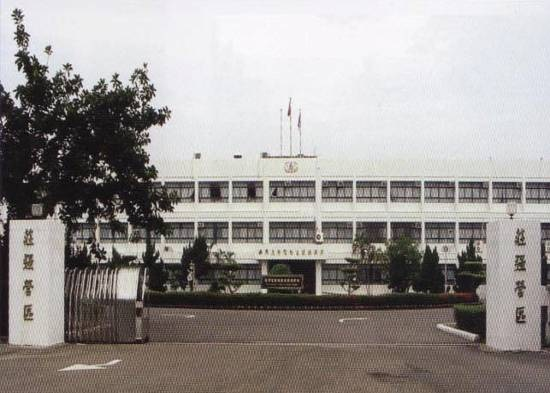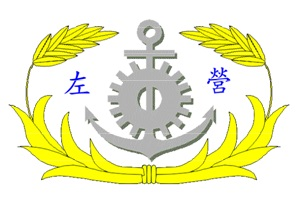
The Naval Tsoying Logistic Support Command is former Naval Tsoying Shipyard which combined original Naval 1st Shipyard and Naval 4th Shipyard.
In the period of Japanese governance, Naval 1st Shipyard was so-called Naval Tsoying Ship Maintenance Department. After the World War 2, Taiwan was back to the reign of R.O.C. The Naval Tsoying Ship Maintenance Workshop than renamed as Naval Tsoying Factory in the end of 1936. Than it renamed as Naval Tsoying Shipbuilding Office in 1937. In 1939, it took over parts of personnel and equipment from Jiang-Nan and Ching-Dao Shipyard in mainland China. In addition to expand the organization, it also renamed as Naval 1st Shipbuilding Office. And it finally renamed as Naval 1st Shipyard on orders.
In the period of World War 2, Naval 4th Shipyard was so-called Nan-Jing Factory, which was a branch factory of Naval Shang-Hai Factory of Japanese. It was transferred to R.O.C after war, than formally set up and named Naval Pa-Kou Factory. In 1939, since the civil war of government and the Communist Party, it was moved to Ding-Hai and merged into Ding-Hai Factory, than it renamed as Naval 1st Factory in July. In October, the factory was separated into 2 departments, one was moved north from Ding-Hai to Chang-Tou, the other was moved to Chi-Jin besides Kaohsiung harbor. In May, 1940, the personnel and equipment was transferred and merged into 1st Factory in Chi-Jin. Than it renamed as Naval 4th Shipyard in 1957.
In order to the military organization rebuilding and the deactivation of former 1st Military Command. In August 1st, 2000, The former Naval Tsoying Shipyard be expanded and set up Naval Tsoying Logistic Support Command. The Naval Kin-men Base Command and Naval Wu-Chiou Communicate Brigade, which was originally belonged to former 1st Military Command, was subordinated to Naval Tsoying Logistic Support Command. And the Vehicle Service Command, Tsoying Harbor Service Brigade, Water and Electricity Service Brigade, Construction Brigade and Fire Fighting Brigade were subordinated to Naval Tsoying Base Service Department, which was a new organization of Naval Tsoying Logistic Support Command.
Since the second step of military organization rebuilding and consolidation, the Naval Kin-Men Base Command and Naval Wu-Chiou Communicate Brigade were merged into Fleet Command in October 1st, 2005. In January 1st, 2006, since the former Logistic Command deactivation, the Naval Amphibious Landing Craft Maintenance and Repair Factory, which was subordinated to Logistic Command, merged into Naval Tsoying Logistic Support Command. The Naval Tsoying Logistic Support Command was subordinated to Naval Maintenance and Repair Command which be set up in February 4th, 2008. The responsibility of Naval Tsoying Logistic Support Command are the base-defensive combat and command assignment of Tsoying and Chi-Jin shipyard area. In peacetime, it responsible for the ship maintenance and repair according to the ship maintenance plan, the logistic support assignment to southern Taiwan, Kin-Men, Wu-Chiou, and land-side department including the transferring, storage, shipping, budget, and finance of military necessaries and parts. Also Naval Tsoying Logistic Support Command is responsible for the supporting to protect and rescue of emergency disaster on orders.

Emblem:
- The emblem of Tsoying LSC integrates the anchor, gear, and the tassel of rice, which symbolizes the spirit of logistic including maintenance ability, fleet supporting, and firm combat capacity.
- Each pattern in the badge has its own meaning. Anchor represents Navy, while gear represents the major assignment of logistic personnel including all logistic supporting missions and fleet supporting, as well as rice represents the supply personnel prepare all parts to support the ship maintenance.
- In summary, they represent the cooperation between shipyard and fleet, also the combination of maintenance and supply.